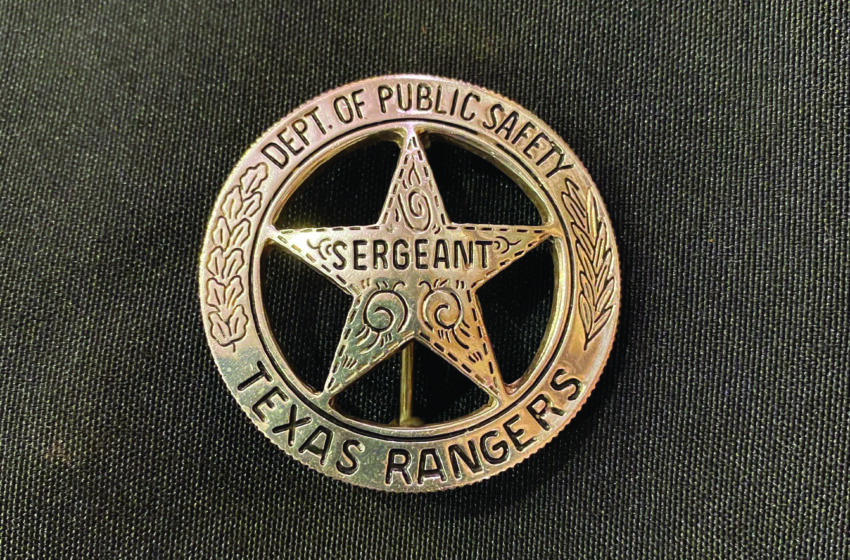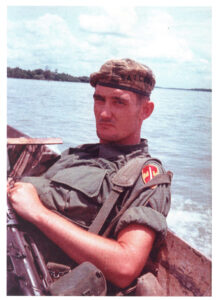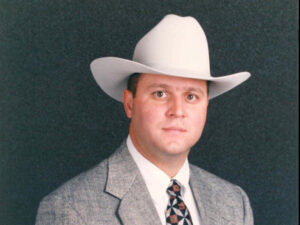The Extra Mile Is Never Crowded
- September 26, 2023

Living Texas Rangers Inducted into Hall of Fame
Texas Rangers have long been regarded as quintessential lawmen and -women. They command a healthy respect from anyone who knows even a little about what they do. Their bravery, courage, experience, leadership, and expertise precede them, and these qualities are evident, too, in those who have been inducted into the Texas Ranger Hall of Fame and Museum—35 rangers in total.
In 2023, the Texas Rangers celebrate 200 years of serving Texans, and the hall of fame inducted four rangers in June. While it was the first time in 25 years that rangers had been added to the inductee ranks, something was different about the 2023 class. The organization added rangers Colonel Homer Garrison Jr., Captain James Frank “Pete” Rogers, Sergeant John Martin, and Sergeant Johnnie Aycock. The difference is, this is the first year any living rangers have been inducted into the hall of fame, specifically Aycock and Martin.
Aycock and Martin both earned hall-of-fame status on their own terms and for different reasons, but neither is willing to admit they are deserving. Retired Texas Ranger Chief Chance Collins, who championed their nominations, predicted they would feel that way.
“They’re going to say, ‘I don’t feel like I deserve to be in there, because rangers do great work, and all I’ve ever done is just be a ranger,’ ” Collins says. “They’re going to want to talk to you about what this person did or what this captain did or what this ranger taught them. They’re going to tell you they don’t belong in the hall of fame.”
Indeed, both Aycock and Martin are quick to give credit to their fellow rangers and local, state, and federal agencies and cite others’ contributions to their successful cases. Teamwork and leadership are critical, they agree, to any achievements they have made.
“Teamwork is the right word,” Aycock says. “If it hadn’t been for people I worked with, and most of the ones I worked for, giving me leeway to do what needed to be done, it wouldn’t have been such a career, really.”
SERGEANT JOHNNIE AYCOCK
Collins calls Aycock the “epitome of a Texas Ranger. The guy is the epitome of bravery, and he would tell you, ‘Hey, I’ve never done anything any other ranger wouldn’t do.’
“Johnnie Aycock has stormed into the mouth of the demons many, many, many times without hesitation. It’s just amazing what he has done and walked away from it,” Collins says.
“Knowing that they have fear but do it anyway is something very special. Courage isn’t the absence of fear, but it’s doing it with the fear and doing it over and over and over and over and over again. It’s something you rarely see in people, and you definitely see it in John Aycock.”

When the hall of fame started considering rangers for this year’s inductees, Aycock’s name came up first, Collins says.
Aycock joined the Department of Public Safety (DPS) as a highway patrolman in 1968 after returning home from deployment to Vietnam. He served as a ranger from 1983 to 2001. During his time as a ranger, he handled cases of violent crime, evaluated blood stain spatter, and resolved kidnappings, among other duties.
Throughout his career, Aycock worked on some tough cases, but his toughest was initially elusive to pinpoint. “Which one?” he asks but eventually names the ones that bubble up. “The Luby’s Massacre [1991] in Killeen was one. The Branch Davidian conflict [Waco, 1993] was another one.”
One of the two Texas Department of Public Safety’s Medals of Valor he earned was for his work on a kidnapping case, another tough assignment, but his biggest accomplishment, he says, is staying alive. On that kidnapping case, Aycock lost his partner and longtime friend, Ranger Stanley Keith Guffey, at Horseshoe Bay in a shootout while trying to retrieve an abducted child. Aycock is the only ranger in the organization’s history to hold two Medals of Valor. There are only four, including him, who hold one.
Aycock has been the recipient of several honors he doesn’t feel he deserves. To hear him tell it, he was just doing his job, making sure criminals were caught and victims were given justice. “It was an honor, obviously an honor,” he says. “I know this is not going to sound right, but I tried not to let those things interfere with my activities. I just went on like it never happened. I thought the best way to handle it would be just get back to work. So that’s what I did.”
SERGEANT JOHN MARTIN
John Martin completely changed the crime scene program of the Texas Rangers during his tenure assigned to Company D out of San Antonio, from 1996 to 2007.
“He modernized it, he standardized it, and it is world class,” Collins says. “We went from being a division that relied upon local deputies or local agencies that had a crime scene tech who could come out and hopefully collect—and they did a good job—to rangers who are now training forensic scientists on crime scenes and on DNA and on collection of biological material. John, as a ranger, created a new cold case program.”
Early in his career at DPS, Martin began to recognize how important it was to ensure a thorough investigation of the crime scene. “You only get one shot at that, and if you don’t do a good job, you don’t get a redo,” he says.
Once a ranger, Martin says he realized just how critical it is to perform thorough and competent crime scene investigations of violent crimes. He was assigned to a newly created group called the Unsolved Crimes Investigation Team, whose primary task was to address cold case murders.

Many law officers learn a lot on the job, he says, but the advanced training in behavioral analysis, forensics, and advanced crime scene investigation techniques he volunteered for in the new unit took the rangers to the next level. He brought back that knowledge and lobbied ranger leadership to develop a training program for the Texas Rangers.
“I offered to take the lead on putting that together to make a return on the investment that had been made in me,” Martin says. He went on to create what they called a crime scene investigation working group.
Martin handpicked six other rangers, one from each ranger company, to work with him to develop a training program—a curriculum—and the equipment requirements to support not only training but ranger crime scene processing activities in the field. The group brought in 20 rangers at a time to take the intensive three-week training program, building on the extensive knowledge base many of them already had.
“I knew that we had done the right thing, but it really was confirmed when I began to receive feedback from rangers who had left our course,” Martin says. “I would get calls from them that went something like this: ‘I just worked a case, and I was successfully able to identify the suspect and get the suspect arrested, and the case is very strong.’ Those kinds of comments—expect a successful prosecution. They would attribute the training that we provided and the equipment that we acquired as the pivotal aspect of the success of that investigation.”
The creation of the training program and the advancement of rangers’ ability to process crime scenes are among the reasons Martin was selected for hall of fame induction.
ON TEAMWORK AND LEADERSHIP
“Teamwork is vital in leadership,” Collins says. “For rangers, and these two gentlemen, the teamwork aspect of leadership is something they showed every day. It doesn’t have to be when bullets are flying, but in any business, when things get difficult—a chaotic moment, a chaotic time, a chaotic program that stresses you out—you’ve got to have a solid team. You’ve got to have people around you who you know care more about you, care more about the program, care more about getting this done than themselves. We may not get paid more to go that extra mile, but it’s what needs to be done and it’s going to take the team to get it done.
“One of my chiefs, Randy Prince, used to say, ‘The extra mile is never crowded,’ ” Collins adds. “How many people are willing to really go that extra mile—not occasionally working a few minutes late but putting your heart and soul into something because it’s right and it’s helpful and it’s part of the team?”
Both Aycock and Martin agree that teamwork is essential. They spent the majority of their time as rangers working alongside others to effect a positive outcome. Martin calls it “leading from behind.”
Because rangers so often work with federal, state, and local authorities and other agencies on cases, it’s important not to steal the glory, Martin says. “Being able to develop that type of leadership style is absolutely imperative to the work of a Texas Ranger.” Martin uses that approach in his current role as vice president of security for Trinity Industries. “A lot of those leadership skills that were developed through my work as a ranger translated into my role as a leader [at Trinity].”
Being able to quickly assess the skills and capabilities of those he is working with and then determine where he can best fill any gaps has been an asset for Martin. “Our whole approach was that of teamwork,” he says. “We integrated ourselves with the agencies within our areas of responsibility so that we were viewed more as extensions of their agencies.”
Coming alongside Martin’s take, Aycock looks at leadership as a matter of understanding, patience, and building trust.
“You have to be pretty understanding of others’ thoughts and their thinking processes,” Aycock says. In dealing with the families of victims and criminals, “you have to be patient with them, and you’ve got to listen to the other officers, because they’re out there every day and you’re not.
“You learn who you can trust,” he adds. “That took time, but I learned something from every single solitary person I ever worked with. So in the next case down the road, you tried to put that in perspective and handle the next one a little better than you handled the one before.”
Collins goes beyond the concepts of teamwork and leadership and calls out commitment. “We can send you to school on crime scenes. We can teach you how to do interviews and how to write reports. We can’t teach a commitment and a desire to go be a part of something greater than yourself,” he says.
“That gets into the whole personnel selection and culture of your organization,” Collins adds. “If you don’t have the right culture in an organization and you’re not selecting the right people, you can put the words up on the wall in the break room, but it’s not going to matter. You’ve got to have people who are willing to be a part of something greater than themselves, and for generations, John Martin and Johnnie Aycock are people who have earned that. They are the epitome of teamwork, of the concept of being a part of something greater than themselves. Sacrifice, dedication, commitment. When people go to the Texas Ranger Hall of Fame and Museum and see their pictures on the wall, that’s what they represent.”






